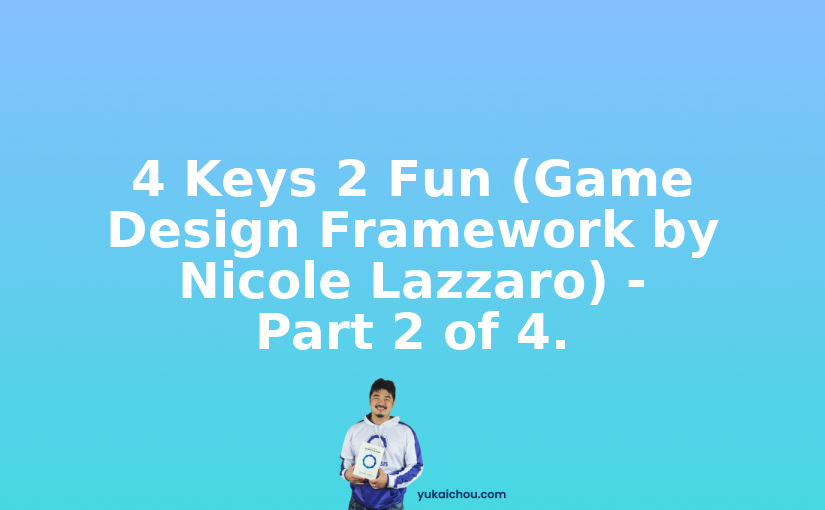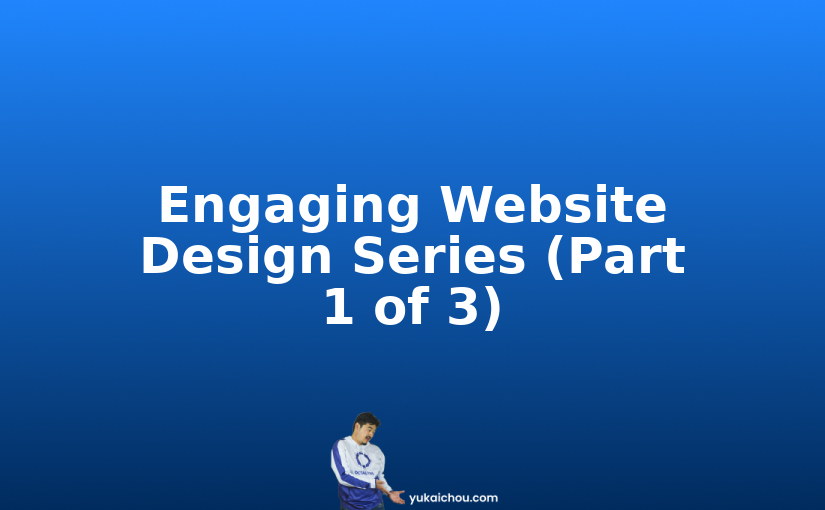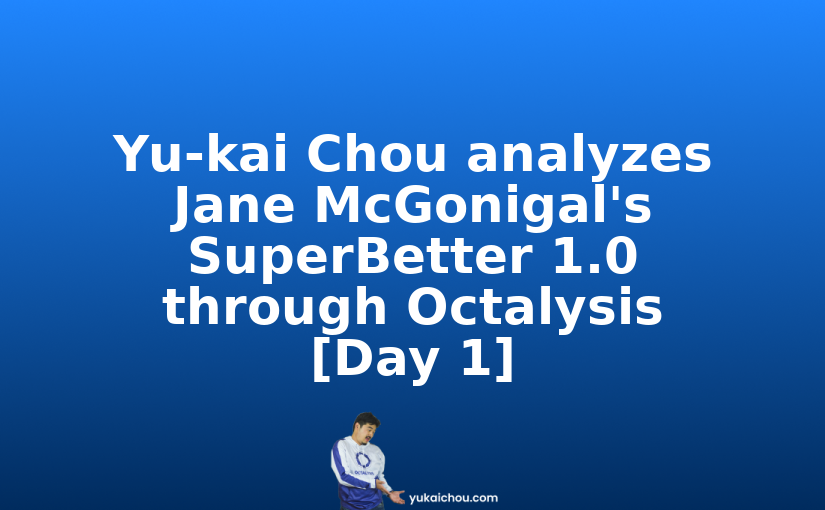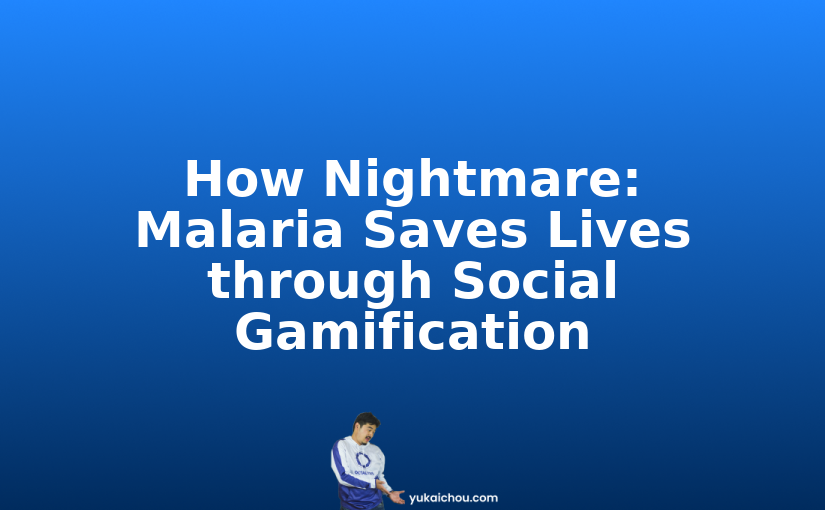Octalysis at Work
Applying the Gamification Framework to Real-world Business Challenges
A Commentary By Gal Rimon, Founder & CEO of Centrical (formerly GamEffective)
Earlier in my career, I was deeply involved in Business Intelligence (BI). It occurred to me that BI is really good at determining what an organization should do next but offered no insight into those who’d do the work, the employees. That realization drove me to form the company I lead today, Centrical. Its aim is to help enterprises help their employees get better at what they do and make it fun in the process.
Given the fun element, it should not be surprising that advanced gamification is at the core of our technology platform which holistically blends it with personalized microlearning, and real-time performance management.
In the course of researching effective ways to apply game mechanics to a range of employee performance challenges, I came upon the work of Yu-kai Chou and, specifically, his gamification framework, Octalysis. I was struck by how it provided a problem-solution construct to identify the sort of game, or motivational device, needed to address a particular real-world business challenge.
The eight core drivers that make up the Octalysis are:
- Core Drive 1: Epic Meaning & Calling
- Core Drive 2: Development & Accomplishment
- Core Drive 3: Empowerment of Creativity & Feedback
- Core Drive 4: Ownership & Possession
- Core Drive 5: Social Influence & Relatedness
- Core Drive 6: Scarcity & Impatience
- Core Drive 7: Unpredictability & Curiosity
- Core Drive 8: Loss & Avoidance
In the years since 2013, when the company was founded, we’ve developed gamification-centric solutions that touch on the core drives in the Octalysis framework for companies like Microsoft, Novartis, Synchrony Financial, and Unilever, among others. Here is a summary of that work and how it’s been applied to help our customers’ employees perform at their best.
Core Drive 1: Epic Meaning & Calling
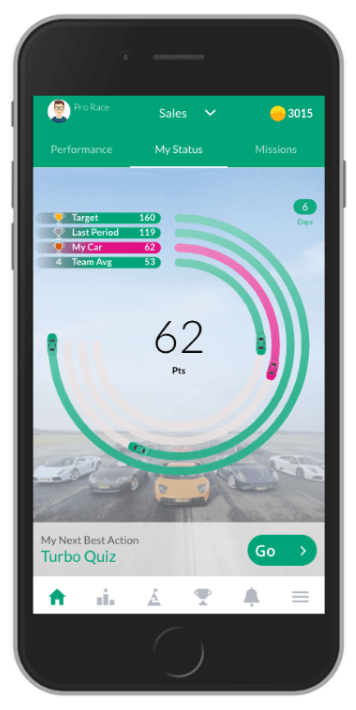
Our first and most popular game mechanic is narratives. They take the form of races, involving cars, boats and mountain climbing. Yes, in our game you can run up Mount Everest. A number of our customers operate contact centers where literally thousands of employees field queries from customers. It’s tough work. Often in the last hour of a shift employees are drained. The centers handling Microsoft’s Consumer Support Operations wanted their service agents to make or take just one more call. We implemented a narrative game that gave employees a reason to make the effort. More than boosting sales, research among these employees found, as a result of the game, they felt they were part of something greater than themselves, and, importantly, their work made a difference. That’s what the core drive Epic Meaning & Calling is about.
Core Drive 2: Development & Accomplishment
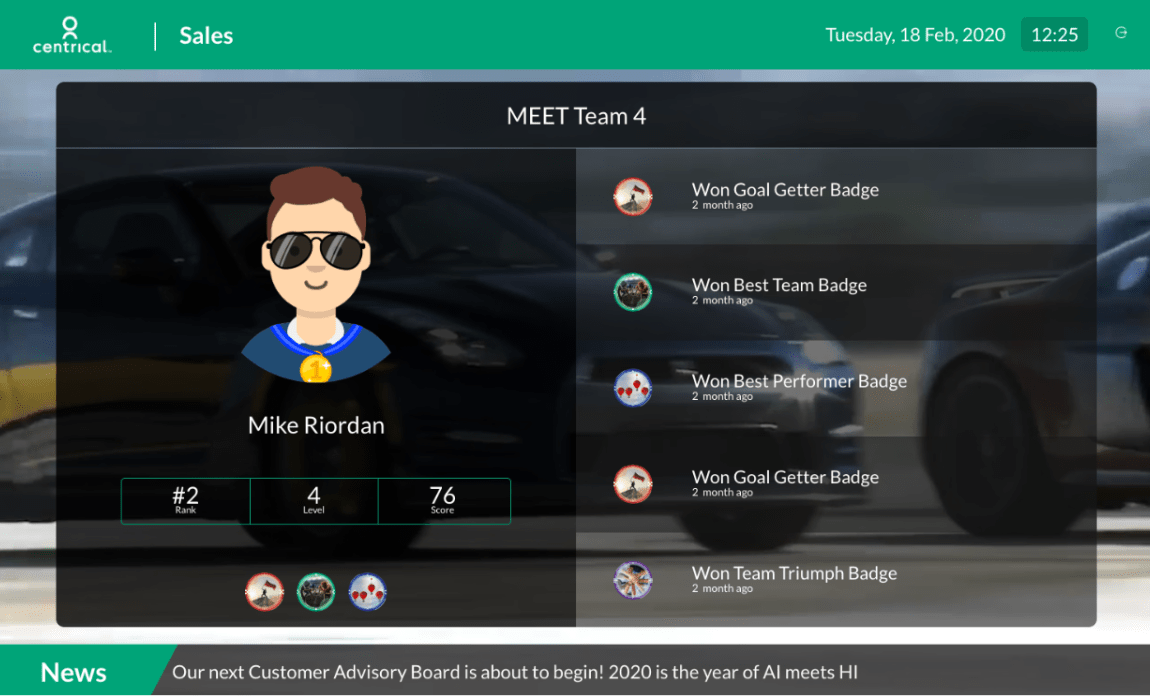
This drive is associated with some tried-and-true game tools. Points, badges and leaderboards head that list. The old PBL’s will still work. But with a decidedly Millennial workforce, adjustments and additions are called for in today’s workplace. The leaderboards we create for customers are designed for maximum interactivity and filtering by each employee/user. Further, we leverage companies’ internal video networks and messaging platforms to showcase the leaderboard in a kind of overtly public manner to please top-performers and prompt others to greater levels. We also include a Kudos feature, a variation on what Yu-kai refers to as High Five.
The effect is the person getting the kudos feels a sense of accomplishment and recognition on top of Social Appreciation.
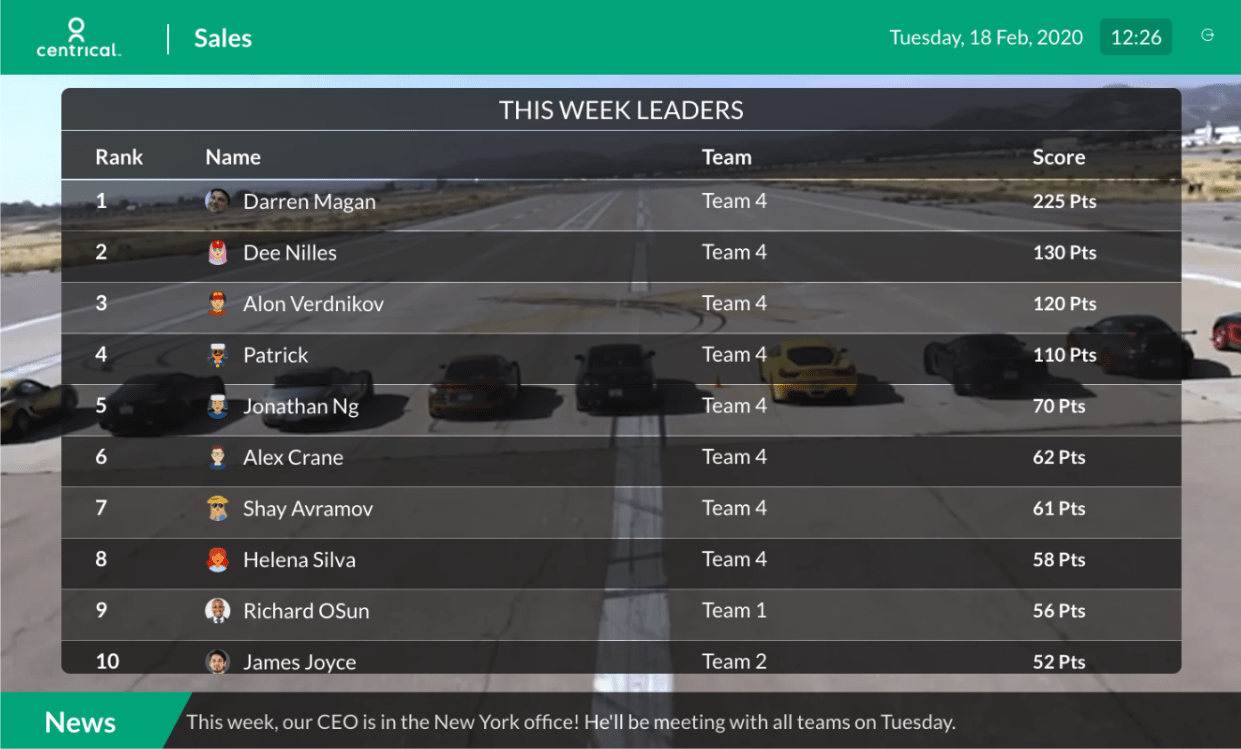
We’ve found that if we leave a gamification effort to PBLs only, engagement will drop; employees will stop looking at the boards because, more than losing interest, there’s no compelling reason to look. In this case, changing things up a bit, as simple as that may sound, makes a big difference in participation continuity.
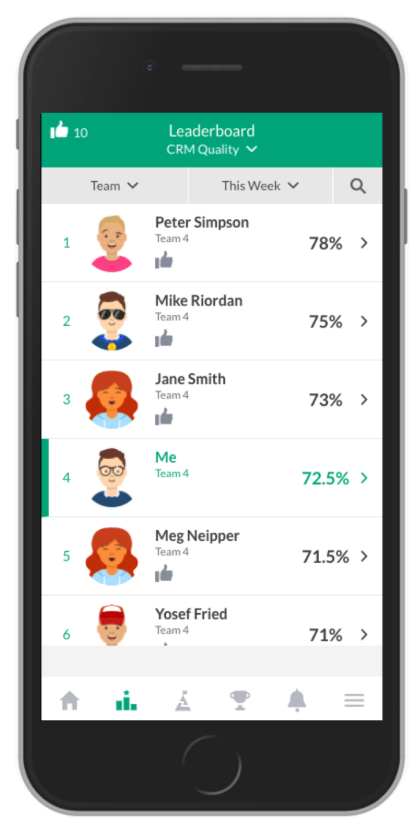
Core Drive 3: Empowerment of Creativity & Feedback
Even people who perform repetitive tasks will contend with creative problem solving, the very essence of this core drive. Interestingly, we’ve found many businesses need a number of ways to push this button in the hearts and minds of their employees. As it so happens, we offer game-driven features that relate directly to this core driver. Of note is our real-time feedback.
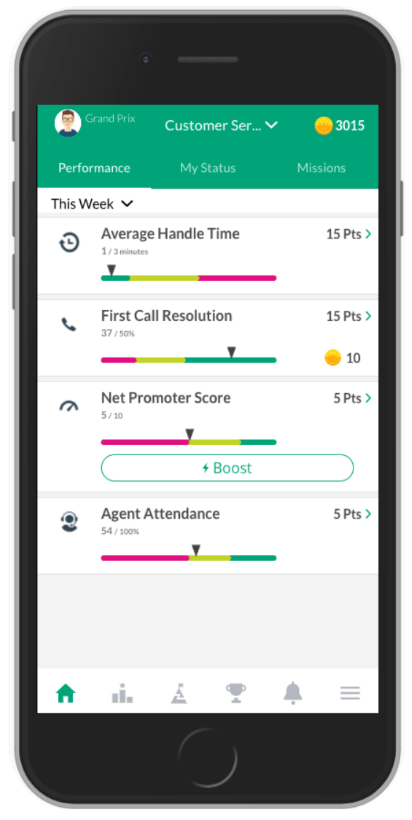
keep up the good work or work
a bit harder – always in a
positive, motivational manner
When employees wonder how they’re doing, they want to know now. A retroactive assessment can actually be a demotivator and, consequently, create a manager-employee relationship problem. Millennials look to their managers as coaches, people who can help improve their skills. If their 1:1 sessions are about stuff in the faded past, coaching can’t happen; confrontation will. Along with that capability, we offer manager messaging, allowing communications with individual team members or the entire group; another way of offering feedback based on need or urgency. Our platform also allows personalized messages to be sent to employees on an automated basis. Consider getting a notification that includes a reminder of a due date but also a digital pat on the back for work done well thus far.
Core Drive 4: Ownership & Possession
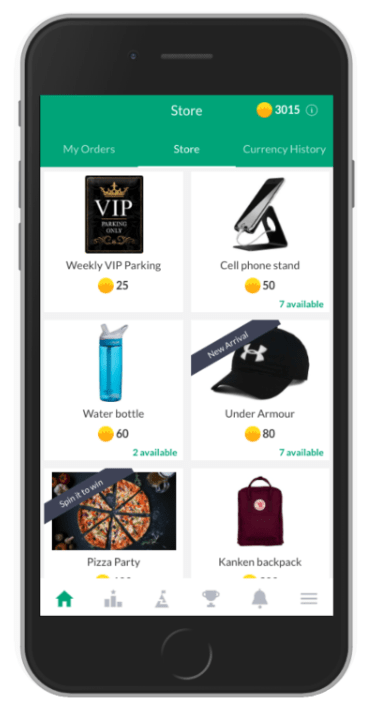
I like to call this the pride of ownership drive. When we possess something, we strive to make it better. It’s like the teenager who is forever washing and polishing her/his new, albeit dilapidated, car. In a business context, it’s a little different. There the need to answer WIIFM is an imperative. Once answered, knowing what’s in it for me can be a powerful motivator. I see this as the drive that can truly serve to transform an employee. Once it becomes clear that it’s that employees stats, points, badges, whatever, s/he wants to keep it and will work hard to do so.
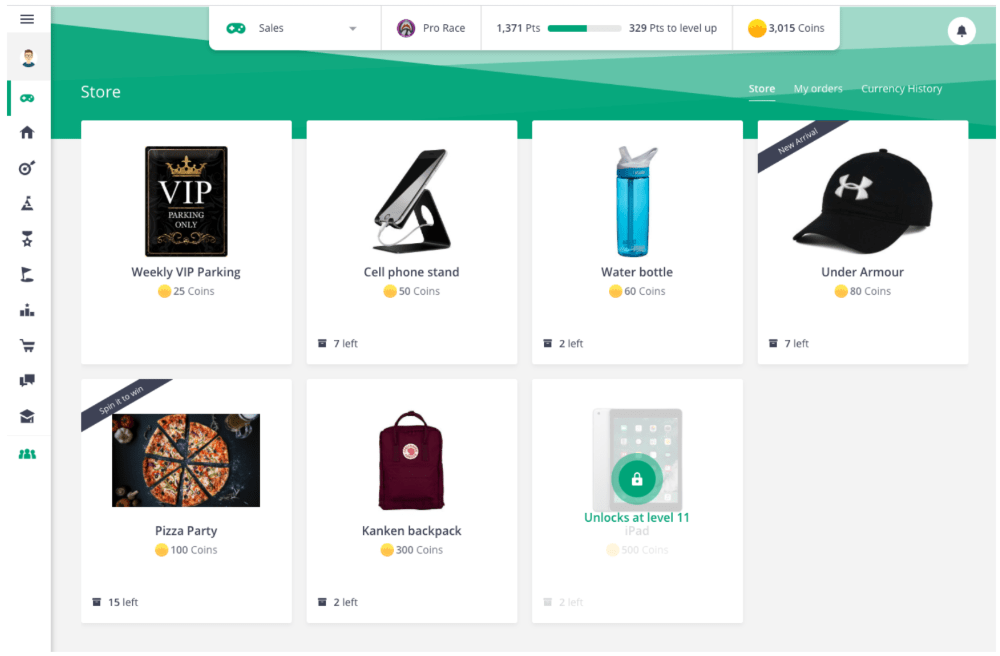
This core manifests itself as a competition on our platform that’s about gaining coins redeemable on virtual stores we operate on behalf of our customers. A multinational BPO that provides customer support services conducted just such a game among its many and diverse employees. Given the choice between tangible and intangible rewards – both of which could be delivered to their workstation in moments – these employees overwhelmingly opted for the ones that hold an intrinsic value. They selected accessories to add to their avatars which, not so incidentally, are seen on the company’s leaderboards. It wasn’t that the tangible rewards weren’t appealing. Employees wanted the sheer joy of feeling good about doing something well…or better than their peers…and leveling up.
Core Drive 5: Social Influence & Relatedness
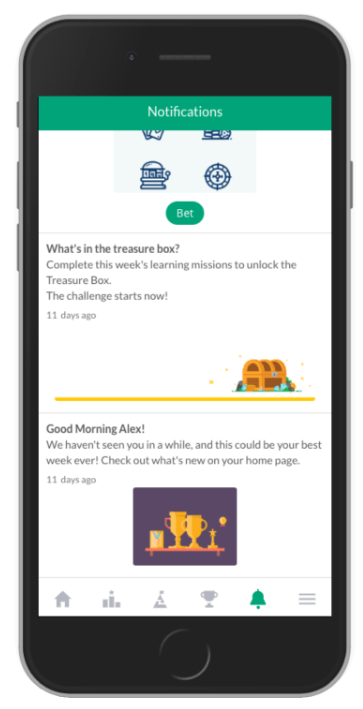
Peer pressure, in a business situation, if managed well can have a dramatic, positive impact on organizational performance. We recognize that in our platform’s ability to put in place challenges that are peer-to-peer or team-based. In addition, our Kudos feature comes into play here. It relates to this drive in that employees can give and get kudos. There’s the social pressure aspect along with friending and mentorship.
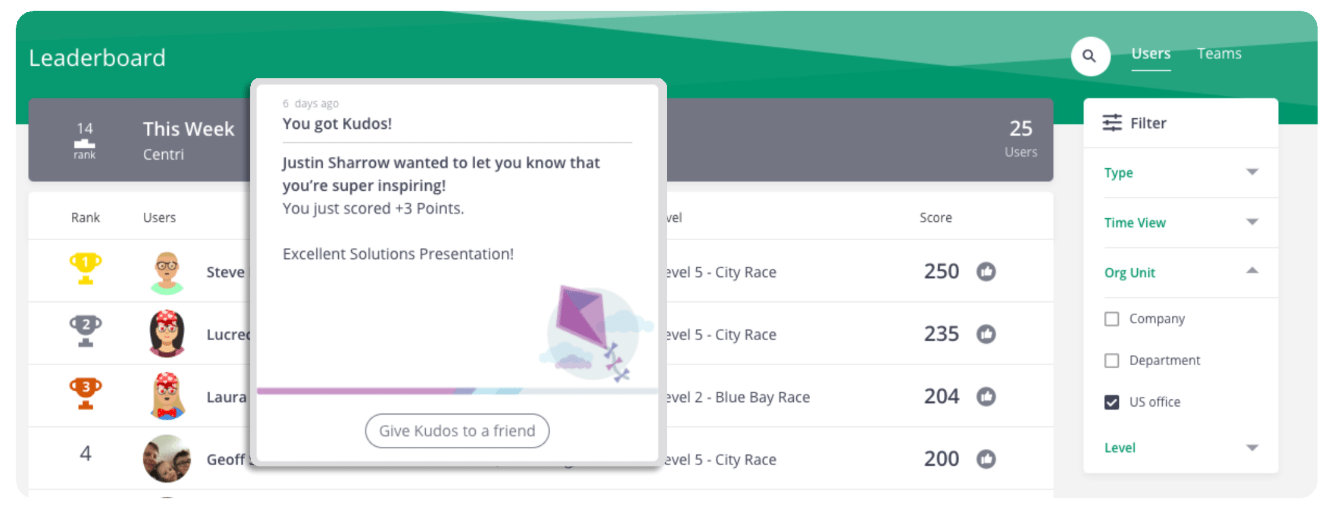
Our Kudos includes categories like “You’re a great leader,” You’re Inspiring,” “Thanks for Your Help,” and “You’re Fun to Work With.” This allows employees to give and get kudos to coworkers and managers, and for managers to do the same. I should add, these kudos can include personalized notes. One of our clients used Kudos in this way to build a culture of cooperation as well as to identify the under-the-radar transformative employees, those receiving the most kudos.
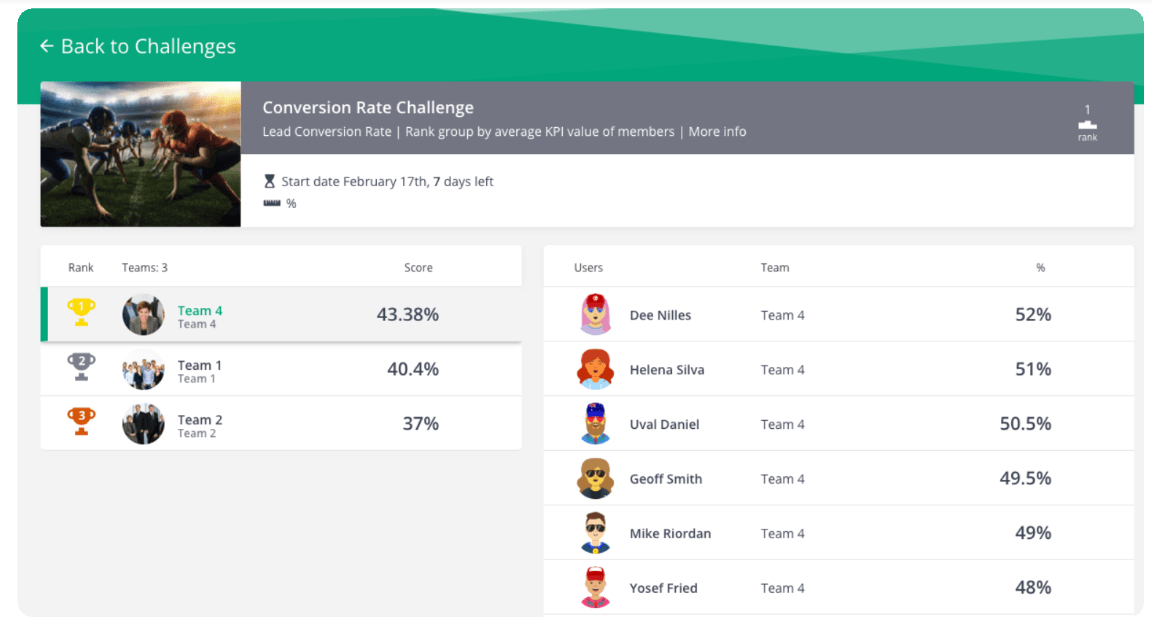
goals in a short time comes with extra reward.
Core Drive 6: Scarcity & Impatience
This core centers on the human desire to have something you can’t or don’t have. We leverage that by allocating a limited number of reward prizes in virtual stores. Beyond that, we use it in challenges where there can be only one winner. While that might seem contrary to the desire to improve performance overall or give the impression that everyone has a chance to win, there are work situations where a company really wants to find out who is the very best of the bunch. To add fire to this fury, these single winner challenges, crafted to fit within several segments to allow for more than one victor, are often done within very tight timeframes.
Core Drive 7: Unpredictability & Curiosity
The ice hockey great Wayne Gretsky is known for saying, “You miss every shot you don’t take.” Those seven words brilliantly sum up why unpredictability is a core driver. We want to find out – whatever it happens to be. And, by extension, curiosity has us poking our noses into things that, maybe, we shouldn’t be. In a work environment, employees are often moved by finding out what’s happening next or what needs to be done next. Our platform lets notifications be issued to let employees understand what they should do next in their jobs or to get closer to earning a bonus. Akin to notifications, our system issues what we call Boosters. These are messages that either urge an employee to keep up the good work or work a bit harder – always in a positive, motivational manner.
Another feature we have is User Initiated Challenges. Basically, these are competitions created by individual employees. The wrinkle we’ve put in is making it necessary to “put some skin in the game,” to ante up and either bet on themselves, for individual challenges, or with their peers. To participate in such a challenge, you need to buy in. It makes the challenges far more compelling than if there is little at risk.
Core Drive 8: Loss & Avoidance
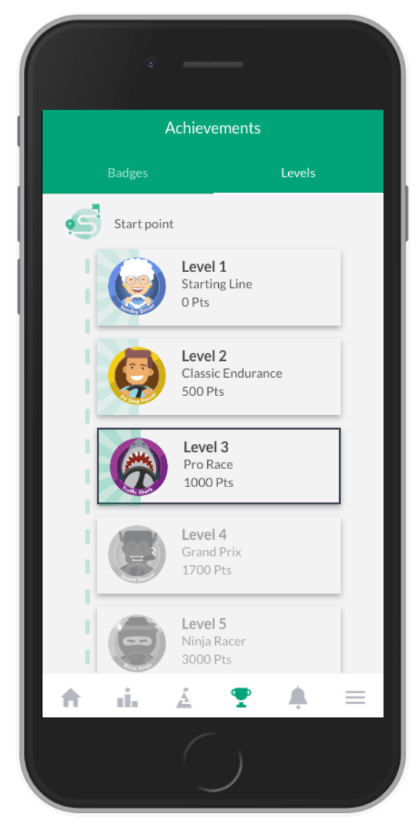
points
As kids we might have done our homework just to avoid a punishment from our parents. Employees often operate the same way. For example, the idea of being able to maintain a streak of some sort, perhaps accumulating points in a process, is a powerful motivator.
At retail, asking sales associates to do what you need them to do isn’t always easy. While they’re competitive, finding the path of least resistance to their bonuses spurs them. Our customer Cellular Sales, a Verizon premier retail partner with 7,000 sales associates, had a problem each time a new iPhone hit the market. Sales of everything but the new device plummeted. Not a good thing for an organization that cannot depend on an unpredictable parade of hit products to drive sales. They used our KPI balance feature with a mix of competitions to help raise new device sales 53% but, and this is important, also raise sales of accessory sales and insurance bundles similarly.
There you have it. Eight real-world examples of how the Octalysis Gamification Framework was applied to the business needs of some of the world’s best and biggest brands. For more information about Centrical, please visit www.centrical.com, email to info@centrical.com, or call +1-800 538 4263.
About Gal Rimon
Gal founded Centrical (previously GamEffective) in 2013, with the vision of helping companies empower their employees’ performance, making them the center of business success. Prior to that, he was CEO of Gilon-Synergy Business Insight, a national leader in Business Intelligence. In 2010, Gilon-Synergy was acquired for $ 20 million by Ness Technologies (NASDAQ:NSTC) and Gal went on to serve as Senior VP at Ness and was a member of its executive management. Prior to that, he was VP customer relations and operations at Deloitte Consulting. He also worked at EDS and Bashan. He holds an MBA degree in Marketing and Information Technologies from Tel Aviv University.
About Centrical (formerly GamEffective)
Centrical employee engagement and performance management solutions help companies motivate employees to exceed their own goals. It does this by blending advanced gamification with personalized microlearning and real-time employee performance management. Centrical’s platform produces improvements like +12% employee productivity, +20% average deal values, +30% faster onboarding, and +12% customer satisfaction KPIs for multinational.



